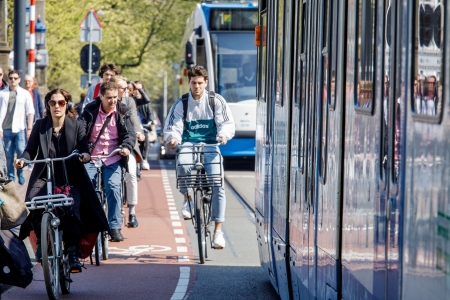In trains, trams and buses, passengers are allowed to either stand or sit down. In the event of a major brake delay, standing passengers run a higher risk of taking a fall and getting hurt than seated passengers, and older standing passengers even more so [23]. In public transport, major brake delays occur less often than in cars. This is because of the weight (mass) of the public transport vehicle and because of the smooth surface of tram and train rails.
A review, mostly based on studies of falls in buses and other public transport, shows that, in a bus or tram, the risk of a fall and subsequent injury (not following a crash) is relatively low: only 0.3-0.5 travellers per million kilometres take a fall [24]. Older bus passengers do run an increased risk of serious injuries after a fall [25]. Older standing passengers more often take a fall than younger passengers, not only when the bus suddenly brakes, but also when it accelerates, particularly soon after boarding [26]. Some driver manoeuvres, such as pulling away, overtaking, changing lanes, and turning appear to increase the risk of more serious injuries for standing passengers [25].
